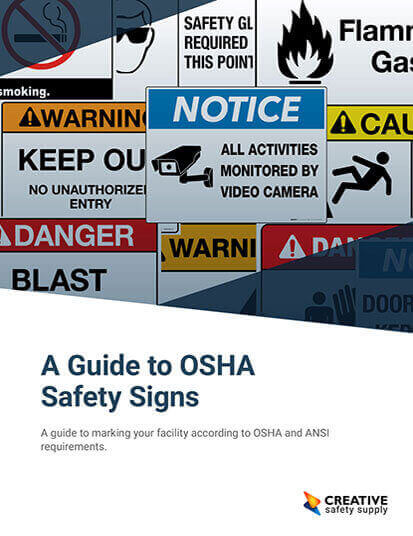
In the landscape of quality control and compliance, "GMP" stands as a fundamental term. Understanding what GMP stands for, its historical context, and its significance in diverse industries is paramount for ensuring safe and high-quality products. This article delves into the core elements of GMP, its relevance in pharmaceuticals, food production, and other sectors, as well as its historical evolution. We'll also explore how combining GMP with related concepts can lead to heightened efficiency and organization, ultimately resulting in superior product quality and consumer safety.
What Does GMP Stand For?
GMP stands for Good Manufacturing Practice(s). It encompasses a set of principles and guidelines aimed at ensuring that products are consistently produced and controlled to meet specific quality standards. GMP is a cornerstone in industries where the safety and efficacy of products directly impact public health.

Historical Background of GMP
The concept of GMP emerged in the mid-20th century as a response to the need for standardized practices in pharmaceutical manufacturing. It gained global recognition with the establishment of regulatory agencies like the FDA in the United States and the EMA in Europe. Over time, GMP principles were adopted across various industries to maintain high standards of quality and safety.
GMP in Pharmaceuticals: Ensuring Efficacy and Safety
Stringent Standards for Drug Manufacturing
In the pharmaceutical industry, The FDA dictates strict protocols for the production, testing, and distribution of medications, such as Title 21 CFR. Adhering to GMP guidelines ensures that every batch of a drug maintains its identity, strength, quality, and purity.
The Role of GMP in Quality Control
GMP requirements encompass a wide range of processes, including documentation, personnel qualifications, facility maintenance, and more. This meticulous approach guarantees that pharmaceutical products are produced and controlled in a consistent, reliable, and safe manner.
GMP in Food Production: Safeguarding Consumer Health
Elevating Food Safety Standards
In the food industry, GMP plays a crucial role in ensuring that consumables are safe for public consumption. It mandates hygienic practices, proper storage, and traceability of ingredients, all of which are vital for preventing contamination and maintaining product integrity.
Preventing Contamination and Adulteration
GMP guidelines set forth rigorous protocols to prevent contamination, cross-contamination, and adulteration of food products. This includes measures like sanitation procedures, pest control, and segregation of allergens, ultimately safeguarding consumer health.
Synergies with Related Concepts: GMP and Quality Management Systems (QMS)
Strengthening Quality Assurance
When combined with Quality Management Systems (QMS), which encompass broader quality control processes, GMP becomes even more potent. QMS integrates quality-related activities, documentation, and responsibilities, further ensuring compliance with GMP standards.
Enhancing Efficiency and Organization
By adopting QMS alongside GMP, organizations can streamline processes, reduce waste, and enhance overall operational efficiency. This combined approach promotes a culture of continuous improvement, leading to sustained high-quality production.
Understanding what GMP stands for is pivotal for industries where product quality directly impacts public health and safety. Whether in pharmaceuticals or food production, adhering to GMP principles leads to a more organized, efficient, and compliant environment. Moreover, when integrated with related concepts like QMS, the benefits multiply, resulting in superior product quality and consumer safety. Embracing GMP is not just a regulatory requirement; it's a commitment to excellence and the well-being of consumers worldwide.
Additional GMP facts:
- GMP stands for Good Manufacturing Practices, which is a system that ensures the quality, safety, and consistency of products such as food, cosmetics, and pharmaceuticals during their manufacturing process. Source: https://safetyculture.com/topics/gmp/
- GMP is also referred to as cGMP or current Good Manufacturing Practice, which implies a continuous commitment to the highest available quality standards through the use of up-to-date systems and technologies. Source: https://www.who.int/teams/health-product-policy-and-standards/standards-and-specifications/gmp
- GMP covers every aspect of the manufacturing process, such as quality management, sanitation and hygiene, building and facilities, equipment, raw materials, personnel, validation and qualification, complaints, documentation and recordkeeping, inspections and quality audits. Source: https://safetyculture.com/topics/gmp/
- GMP is regulated by various authorities around the world, such as the US Food and Drug Administration (FDA), the European Medicines Agency (EMA), the World Health Organization (WHO), and others. Each authority may have different GMP requirements and guidelines for different classes of products, such as sterile pharmaceuticals or biological medicinal products. Source: https://www.who.int/teams/health-product-policy-and-standards/standards-and-specifications/gmp
- GMP helps manufacturers to reduce the risks of product defects, recalls, fines, and legal actions. It also protects consumers from harmful or ineffective products. GMP also facilitates international trade by ensuring the compliance of products with the quality standards of different markets. Source: https://www.clearias.com/good-manufacturing-practices-gmp/
Similar Questions
- What Role does ISO play in Global Trade and Market Access?
- What are some of the Key Differences between ISO 9001 and ISO 14001?
- Why are ISO Standards Important for Businesses?
- What are the ISO Standards for Food Safety?
- What Does ASHRAE Stand For?
- What does ISO stand for?
- What is ATSDR?
- What does PEL stand for?
- What should I Expect in the ISO Certification Process?


